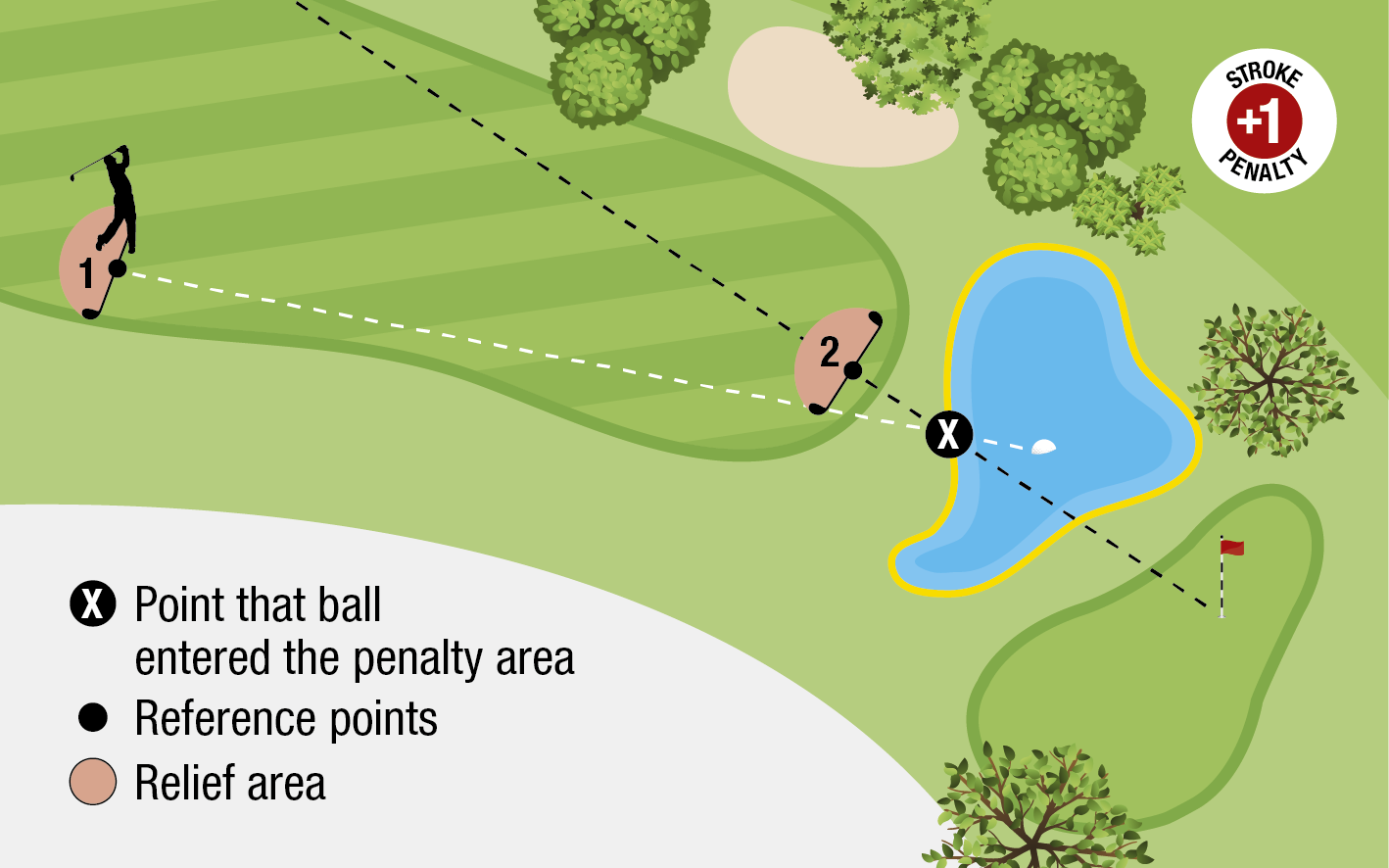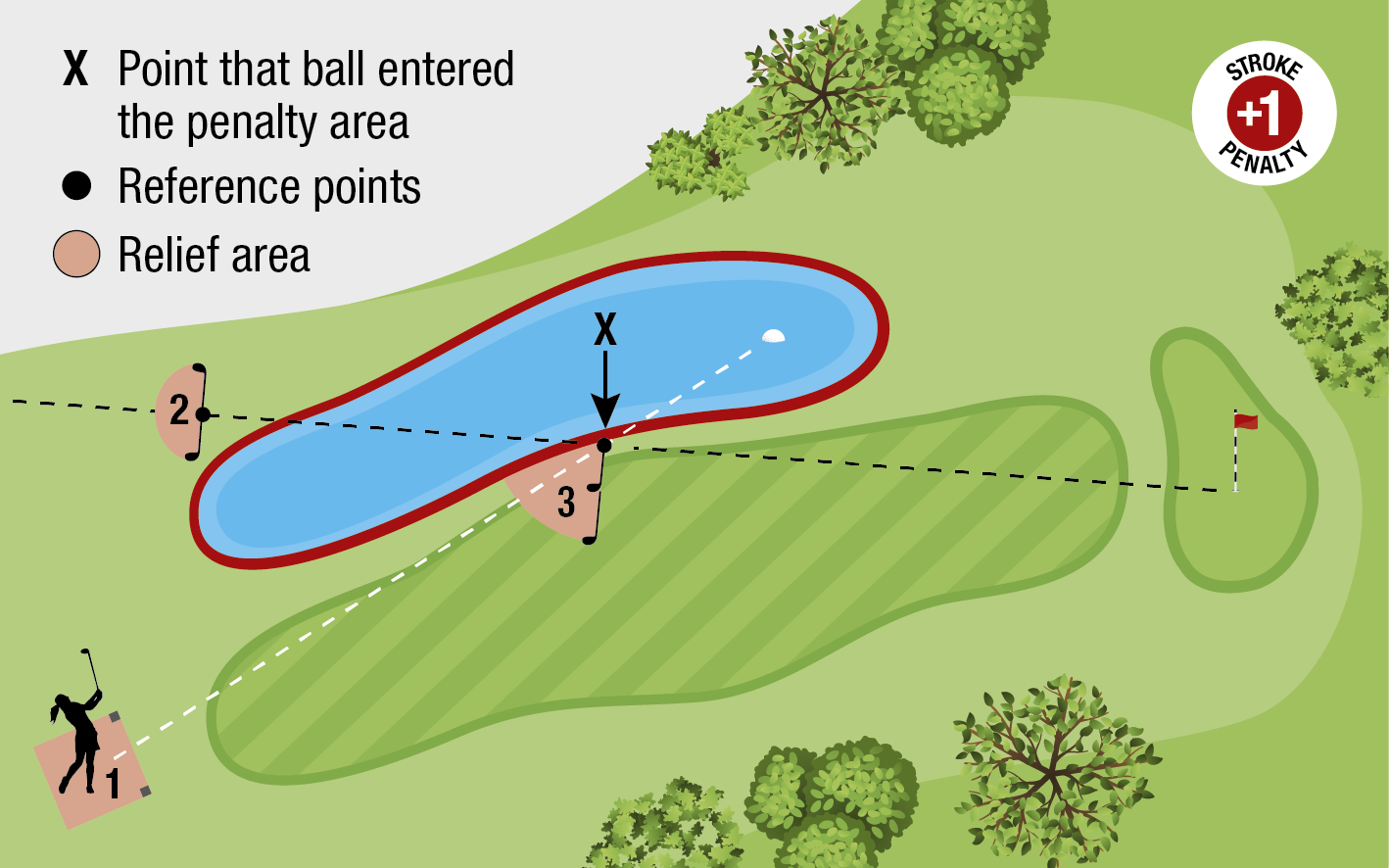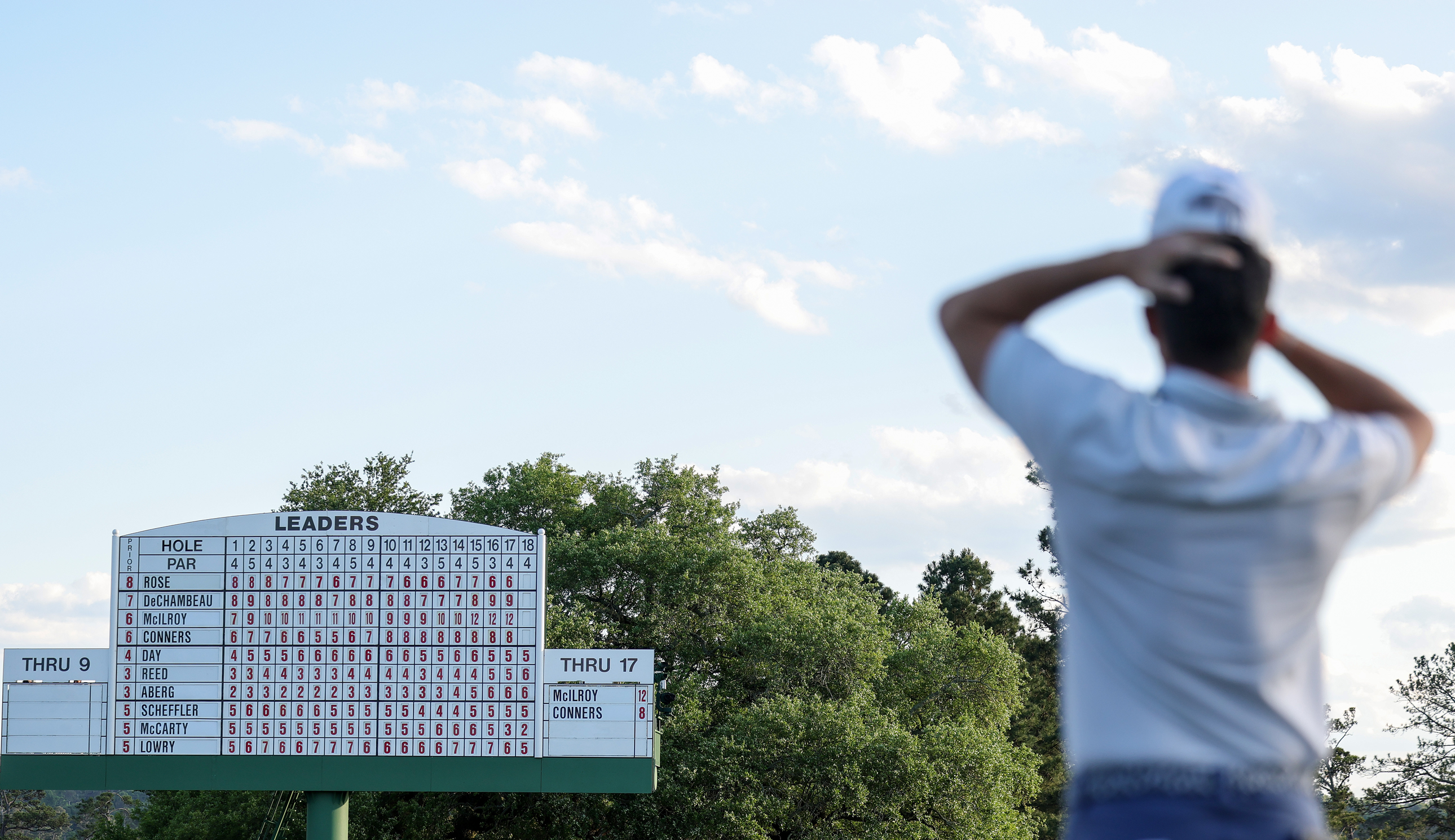What Are Penalty Areas In Golf?
Do you know what a penalty area is and what to do when your ball comes to rest in one? Rule 17 will help you


What are they?
They are best described as bodies of water or other areas defined by the Committee where a ball is often lost or unable to be played. For one penalty stroke, a player may take specific relief options to play from outside the penalty area.
Where are they?
Penalty areas are defined by either red or yellow stakes. The colour determines which relief options are available to you.
When are you in a penalty area?
You are deemed to be within a penalty area if any part of the ball is within, or touching the boundary of, the penalty area. This also includes if the ball is resting above ground, such as on a leaf.
I can't find my ball
Get the Golf Monthly Newsletter
Subscribe to the Golf Monthly newsletter to stay up to date with all the latest tour news, equipment news, reviews, head-to-heads and buyer’s guides from our team of experienced experts.
By the letter of the law, you don't have to find your ball in order to prove you are in a penalty area. The rules state that it must be known or virtually certain that your ball came to rest in the penalty area prior to taking relief.
To put it simply, if you see your ball heading towards a penalty area, watch it carefully so you can determine the next course of action. If it is not known or virtually certain and the ball can't be found, you must take what is known as stroke and distance relief. More on that shortly.
Options
Once you've determined your ball to be within a penalty area, you have two options.
- Play the ball as it lies without penalty; or
- Play from outside the penalty area by taking relief. This is a one stroke penalty
Should you choose to play the ball from the penalty area, you may do so in the same way you would from the fairway. As of 2019, this means you may ground your club and move any loose impediments.
Relief
Should you decide against playing the ball from the penalty area, the following options are available to you.
Option 1 - Stroke And Distance Relief
Play the original (or another if the ball is not found) from where the previous stroke was made.
Option 2 - Back-On-The-Line Relief - Yellow Penalty Area
You may take a drop in an area that is based on a reference line going straight back from the hole through the estimated point where the original ball last crossed the edge of the penalty area. This is best visualised below:

Option 3 - Lateral Relief - Red Penalty Area Only
As well as both options 1 and 2, you have an additional third option. This is to drop within two club-lengths from the point where the ball last crossed the edge of the penalty area. The below is a great visual aid.

As with all drops, you must do so no closer to the hole.

James joined Golf Monthly having previously written for other digital outlets. He is obsessed with all areas of the game – from tournament golf, to history, equipment, technique and travel. He is also an avid collector of memorabilia; with items from the likes of Bobby Jones, Tiger Woods, Francis Ouimet, Arnold Palmer, Lee Trevino, Adam Scott and Ernie Els. As well as writing for Golf Monthly, James’ golfing highlight is fist bumping Phil Mickelson on his way to winning the Open Championship at Muirfield in 2013. James grew up on the east coast of England and is the third generation of his golfing family. He now resides in Leeds and is a member of Cobble Hall Golf Club with a handicap index of 1.7. His favourite films are The Legend of Bagger Vance and Tin Cup.
-
 Why The 16th Pin Has Been Moved From Its Traditional Spot For The Masters Final Round
Why The 16th Pin Has Been Moved From Its Traditional Spot For The Masters Final RoundThe 16th pin at Augusta National is in an different position that normal for the final round of The Masters, but why is that?
By Mike Hall Published
-
 Seve Ballesteros And Brooks Koepka Among The Big Names That Rory McIlroy Would Join As A Five-Time Major Winner With A Masters Victory
Seve Ballesteros And Brooks Koepka Among The Big Names That Rory McIlroy Would Join As A Five-Time Major Winner With A Masters VictoryRory McIlroy leads The Masters going in to the final round and, if he were to win, he would join an illustrious list of five-time Major winners
By Matt Cradock Published